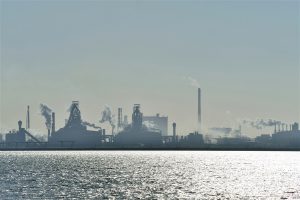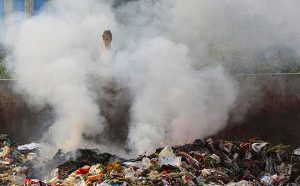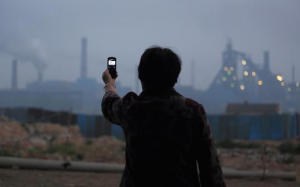The Supreme People’s Court recently launched a national ‘environment and resources court’, and last month announced the founding of a training centre for judges.
The moves are aimed to bring more professionalism to handling of pollution cases, and come amid rapid growth in the number of environmental courts, which according to the Supreme People’s Court now number at least 370 throughout the country.
Although the number of cases being heard is still relatively low as new environmental laws only start to take effect, figures are expected to rise sharply within the next three years.
Prior to 2014 there had been a total of approximately 100 public interest environmental cases heard nationwide, but during last year alone, more than 100 were heard.
“But that’s still not a lot,” says Lin Yanmei, associate professor at Vermont Law School.
More than 300 judges have now received specialist training, 18 of whom have gone on to instruct others.
In addition, new training courses in environmental law are being provided by the National Judges College and China University of Politics and Law.
But the measures could take five years to meet the requirements of the new environmental courts, said Han Deqiang, deputy-secretary of the Supreme People’s Court’s Center for Research into Environmental and Resource Issues.
In addition to having the required capacity to deal with an expected increase in cases, the reforms also bring a new set of challenges for judges, many of whom lack requisite background and technical knowledge.
“It’s like in intellectual property cases,” says Han. “It doesn’t matter how high-ranking you are, if you don’t know the field you can’t hear the case. It’s the same with environment and resource cases.”
Environmental law isn’t a popular choice at universities, and only a very small number who study it go on to work in the judiciary, say experts.
The ideal environmental judge has a background in science and engineering, allowing them to more easily understand the technical issues involved, says Luo Guangqian, head of China’s first environmental court. But such candidates are scarce.
Some areas run extensive training programmes. Shaanxi province has put 80 judges through training offered in a partnership between the EU-China Environmental Governance Programme and the Ministry of Environmental Protection.
Scaling up the number of qualified and capable judges will be crucial because many have never handled an environmental case and have little idea of what’s involved.
Urgency is needed because “we’re going to be getting a lot more of these cases soon,” says Tu Daoyong, a judge at the intellectual property tribunal of the provincial high court.
Judges with some experience in environmental cases face other challenges, such as maintaining independence in areas where polluting companies wield hefty political power and enjoy patronage from local officials.
Because environmental cases are often complex, even the most experienced judges can sometimes be left scratching their heads.
Luo Guangqian suggests an innovative approach to hearing cases.
To cite one example, a company accused of pollution could find itself receiving a ‘pre-hearing order’ to halt operations and discharge of pollutants. In the past, such an order would only have come from a government body.
Allowing expert testimony as evidence is another innovation that should be applied on a wider scale, he adds. For example, an expert on soil pollution might now be called to testify on whether pollution can be cleaned up, or how much damage has been done.
A court could then accept that evidence, rather than commissioning a third-party body to carry out an independent assessment, saving both time and money.
An environmental court in Guiyang in the southern Chinese province of Guizhou was one of four set up as part of trials initiated by the Supreme People’s Court, and has been granted the right to ‘innovate’ in dealing with cases.
The court was created in 2007 to resolve a jurisdiction dispute involving pollution in the city’s main water source, and the court eventually ruled against the offending fertiliser plant, making it the first public interest case of its kind in China.
However its not clear at this stage whether the Supreme People’s Court will be able to expand the experience of the four trial locations to courts on a nationwide basis.








